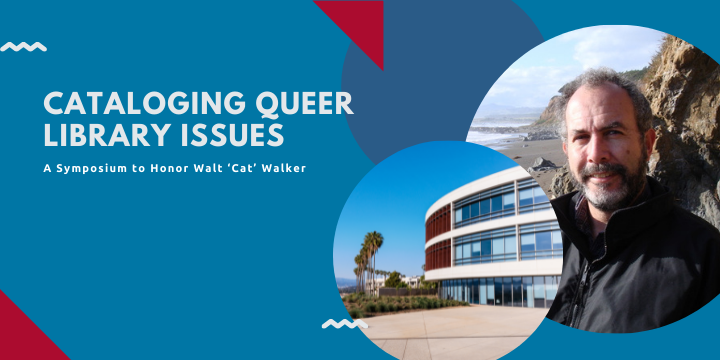Start Date
12-8-2021 12:50 PM
End Date
12-8-2021 1:25 PM
Description
Abstract
The Library of Congress is the de facto national library of the United States; as such, the Librarian of Congress has emphasized our desire to be a user-centered resource to a diverse group of patrons. Serving these diverse patrons by necessity involves making our materials pertaining to marginalized groups more discoverable and accessible. In exploring possible projects to complete via telework, my supervisor and I discovered a gap in our Music Division special collections documentation. Despite holding the papers of several prominent LGBTQ+ figures in the performing arts, there was very little acknowledgement of sexual orientation or gender identity on our public-facing site, leading to a lack of discoverability for these and other artists. To that end, I started compiling a survey of our special collections pertaining to LGBTQ+ topics and individuals. In the process, there were several decisions to make. Should closeted individuals be included? What of individuals whose identity is unclear? How should we describe queer people that never publicly identified with a particular term, or whose identity might have changed according to present-day terminology? How do we make this information available to patrons? The end result of this survey revealed 39 collections that focus on an LGBTQ+ individual out of a total of over 500. However, I also took the extra step of searching the indexing terms of each collection, finding an additional 82 collections that do not focus on queer topics but include correspondence with or papers by or about LGBTQ+ individuals, emphasizing their importance and the interconnectedness of the performing arts community. The process of searching these indexing terms was a lengthy one, but necessary; without this extra step, two-thirds of our collections with queer materials would remain hidden. The data that went into this survey is currently presented in a front-facing resource as well as a blogpost alerting patrons of its existence. It is also in the process of being converted to a LibGuide,with additional information from other sections of the Music Division. Creating this resource to emphasize the lives and accomplishments of LGBTQ+ artists has illuminated connections between and within our collections, highlighted unprocessed collections as candidates for prioritization, and will hopefully increase future acquisitions of queer material.
Lightning Talk #5 (5 min): Making LGBTQ+ Special Collections Discoverable at the Library of Congress, Music Division
Abstract
The Library of Congress is the de facto national library of the United States; as such, the Librarian of Congress has emphasized our desire to be a user-centered resource to a diverse group of patrons. Serving these diverse patrons by necessity involves making our materials pertaining to marginalized groups more discoverable and accessible. In exploring possible projects to complete via telework, my supervisor and I discovered a gap in our Music Division special collections documentation. Despite holding the papers of several prominent LGBTQ+ figures in the performing arts, there was very little acknowledgement of sexual orientation or gender identity on our public-facing site, leading to a lack of discoverability for these and other artists. To that end, I started compiling a survey of our special collections pertaining to LGBTQ+ topics and individuals. In the process, there were several decisions to make. Should closeted individuals be included? What of individuals whose identity is unclear? How should we describe queer people that never publicly identified with a particular term, or whose identity might have changed according to present-day terminology? How do we make this information available to patrons? The end result of this survey revealed 39 collections that focus on an LGBTQ+ individual out of a total of over 500. However, I also took the extra step of searching the indexing terms of each collection, finding an additional 82 collections that do not focus on queer topics but include correspondence with or papers by or about LGBTQ+ individuals, emphasizing their importance and the interconnectedness of the performing arts community. The process of searching these indexing terms was a lengthy one, but necessary; without this extra step, two-thirds of our collections with queer materials would remain hidden. The data that went into this survey is currently presented in a front-facing resource as well as a blogpost alerting patrons of its existence. It is also in the process of being converted to a LibGuide,with additional information from other sections of the Music Division. Creating this resource to emphasize the lives and accomplishments of LGBTQ+ artists has illuminated connections between and within our collections, highlighted unprocessed collections as candidates for prioritization, and will hopefully increase future acquisitions of queer material.




